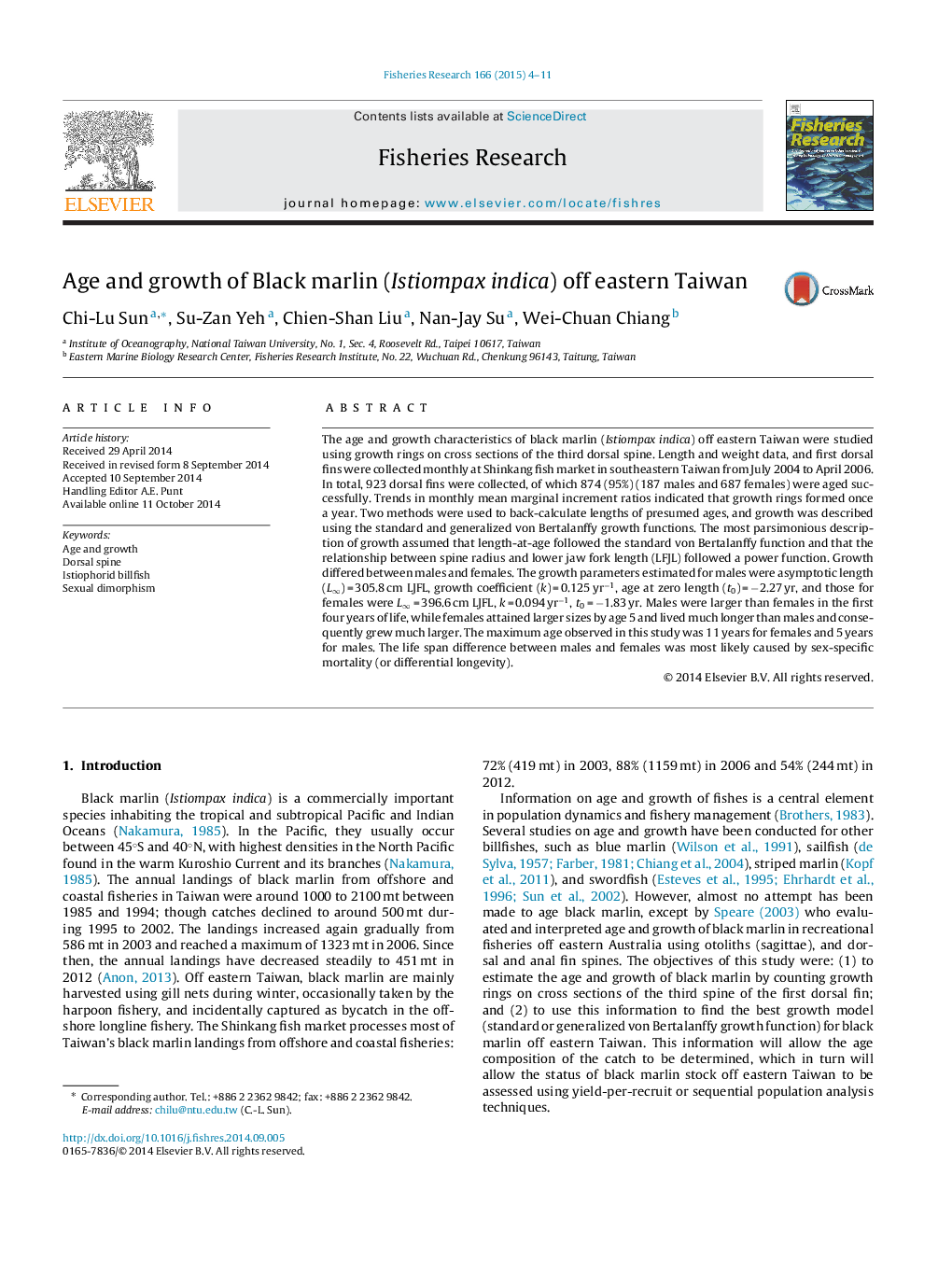| Article ID | Journal | Published Year | Pages | File Type |
|---|---|---|---|---|
| 4542821 | Fisheries Research | 2015 | 8 Pages |
•Growth rings on cross sections of the third dorsal spines formed once a year.•Lengths were best back-calculated from spine radius using a power function.•Growth rates were best estimated by the standard von Bertalanffy growth function.•Females grow faster than males although have smaller sizes before age 4.•Females live much longer than males and consequently grow larger.•Black marlin exhibit sexual dimorphism caused by different sex-specific longevity.
The age and growth characteristics of black marlin (Istiompax indica) off eastern Taiwan were studied using growth rings on cross sections of the third dorsal spine. Length and weight data, and first dorsal fins were collected monthly at Shinkang fish market in southeastern Taiwan from July 2004 to April 2006. In total, 923 dorsal fins were collected, of which 874 (95%) (187 males and 687 females) were aged successfully. Trends in monthly mean marginal increment ratios indicated that growth rings formed once a year. Two methods were used to back-calculate lengths of presumed ages, and growth was described using the standard and generalized von Bertalanffy growth functions. The most parsimonious description of growth assumed that length-at-age followed the standard von Bertalanffy function and that the relationship between spine radius and lower jaw fork length (LFJL) followed a power function. Growth differed between males and females. The growth parameters estimated for males were asymptotic length (L∞) = 305.8 cm LJFL, growth coefficient (k) = 0.125 yr−1, age at zero length (t0) = −2.27 yr, and those for females were L∞ = 396.6 cm LJFL, k = 0.094 yr−1, t0 = −1.83 yr. Males were larger than females in the first four years of life, while females attained larger sizes by age 5 and lived much longer than males and consequently grew much larger. The maximum age observed in this study was 11 years for females and 5 years for males. The life span difference between males and females was most likely caused by sex-specific mortality (or differential longevity).
